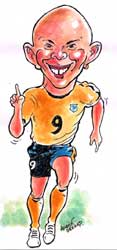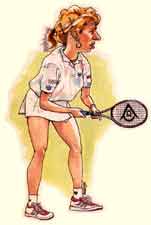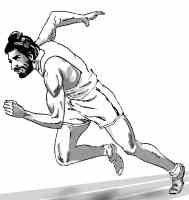
Dimdima
Online Children's Magazine from India

Dimdima
Online Children's Magazine from India
EXPLORE MORE...
Get Help or Give Help.
- Do you have a Sports Question?
- Post it here and get the answer.
- Some questions posted by others are not yet answered.
- View those questions and answer them.

If you think you are beaten, you are.
If you think you dare not, you don’t!
If you like to win, but think you can’t,
It’s almost a cinch you won’t.
If you think you’ll lose, you’re lost;
For out in the world we find
Success begins with a fellow’s will;
It’s all in the state of mind.
If you think you are outclassed, you are,
You’ve got to think high to rise,
You’ve got to be sure of yourself before
You can ever win a prize.
Life’s battles don’t always go
To the stronger or faster man
But sooner or later the man who wins
Is the man who THINKS HE CAN.

- Short biographical sketches of Great Cricketers of the past and the present
- Nasser Hussain... Vivian Richards... Farokh Engineer... Gundappa Viswanath...etc
- 45 All-time famous cricketers...
- good collection...

- Short biographical sketches of Great Sports personalities of the past and the present
- Dhanraj Pillay ... David Beckham ... Serena Williams ... Viswanathan Anand...etc
- 12 All-time famous Sports Stars...
- More in pipeline...



Dimdima is the Sanskrit word for ‘drumbeat’. In olden days, victory in battle was heralded by the beat of drums or any important news to be conveyed to the people used to be accompanied with drumbeats.
Bharatiya Vidya Bhavan
K. M Munshi Marg,
Chowpatty, Mumbai - 400 007
email : editor@dimdima.com
Bharatiya Vidya Bhavan
505, Sane Guruji Marg,
Tardeo, Mumbai - 400 034
email : promo@dimdima.com
Dimdima.com, the Children's Website of Bharatiya Vidya Bhavan launched in 2000 and came out with a Printed version of Dimdima Magazine in 2004. At present the Printed Version have more than 35,000 subscribers from India and Abroad.